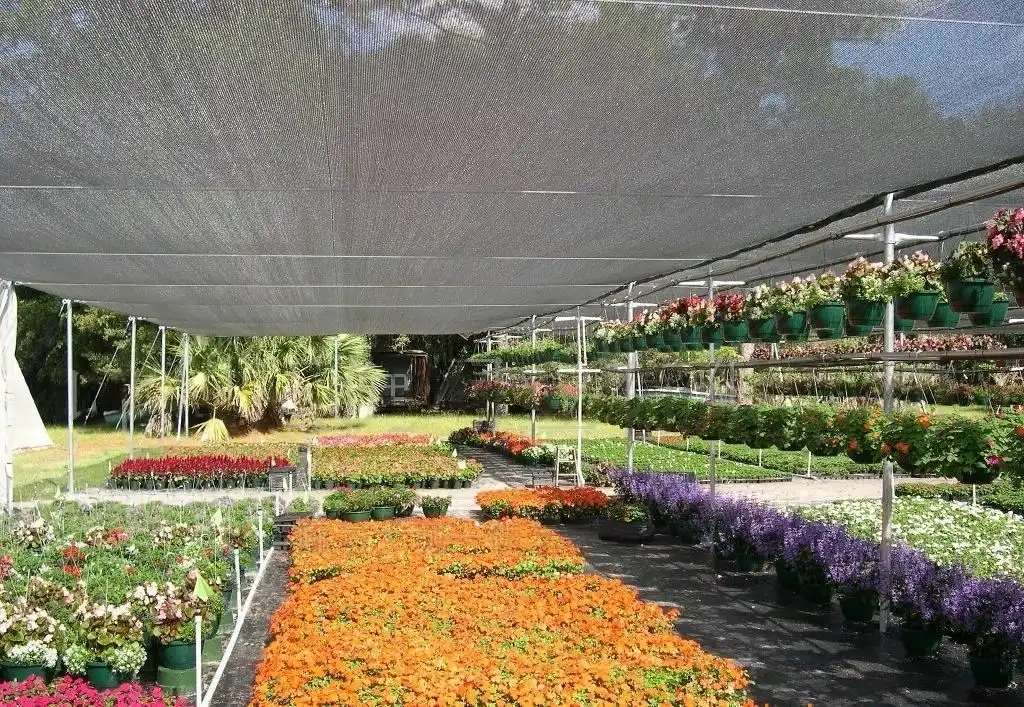As a gardening enthusiast or flower farmer, you’ll quickly realize that flower protection nets are indispensable tools. Each type of net, from shade nets to frost nets, offers unique functions and features designed to provide the best protection for your flowers during growth and transportation. This ensures your flowers remain in their most beautiful state and retain their market value.
This article will introduce several common types of flower protection nets that you might find useful. These include insect nets, shade nets, hail nets, frost/wind nets, bud nets, and plant support nets. We hope this information will assist you in effectively growing and protecting your flowers.
6 Different Types of Flower Protection Nets
1. Insect Nets
According to research from Ohio State University, insects can harm flowers, affecting their quality and yield. Therefore, pest control is crucial in flower cultivation. Among all pest control measures, insect nets are one of the most effective pesticide alternatives. These nets are typically made from lightweight synthetic fibres like polyethylene or polypropylene. They are both lightweight and durable, with a fine mesh that effectively blocks small pests like aphids and whiteflies. Additionally, they can prevent birds from reaching the plants, protecting your fruits and flowers from being pecked.
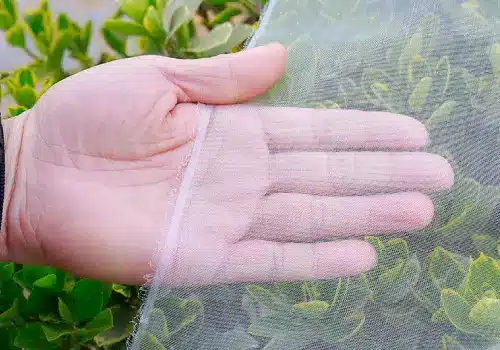
Flower Anti-insect Nets
Insect nets have high light permeability, allowing flowers inside the net to maintain good air circulation and reducing the risk of fungal diseases caused by high humidity. They are also easy to install; you can use a frame or cover the plants directly, ensuring the net doesn’t touch the sensitive parts of the plants to avoid damage from friction. If you are a gardening enthusiast, insect nets will be your ideal choice.
2. Shade Nets
Shade nets are essential for a suitable growing environment for shade-loving flowers in hot and arid regions. Shade nets are mainly made from weather-resistant materials like high-density polyethylene (HDPE). Their primary function is to regulate light exposure, protecting your flowers from excessive direct sunlight and creating a more suitable microenvironment. Depending on the light requirements of the plants and the geographical location, the shading rate of shade nets can range from 15% to 90%.
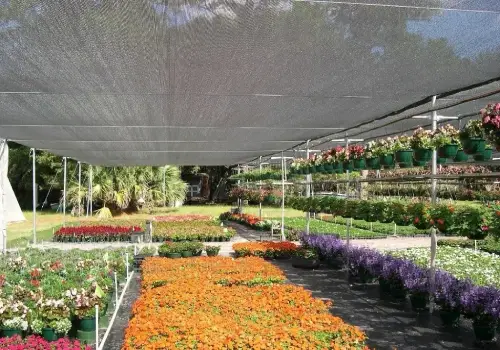
Shade Netting for Flower Planting
For example, ornamental flowers and herbs requiring lower light levels are better suited for nets with higher shading rates. In contrast, drought-resistant plants that need full sun should use nets with lower shading rates.
Don’t Miss: What Percentage Shade Cloth is Best for Your Greenhouse
3. Hail Nets
If you are concerned about hail damaging your flowering plants, hail nets are an essential protection tool. Hail nets are primarily made from polymer materials with strong tensile and impact resistance, designed to protect flowers in hail-prone areas during the spring and summer seasons. Besides preventing hail damage, hail nets can shield plants from being directly washed by heavy rain, preserving soil structure and preventing root erosion.
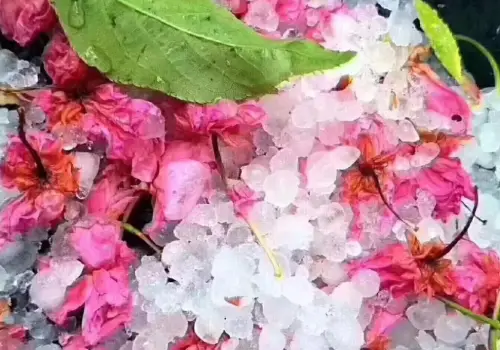
Hail damaged flowers
Don’t Miss: How to Choose Hail Netting for Garden Plants?
4. Support Nets
Plant support nets are a very effective option to help your flower stems grow vertically in agriculture and gardening. Plant support nets are usually made from durable materials like plastic or metal, with high tensile strength and weather resistance. This makes them capable of bearing the weight of plants and withstanding harsh weather conditions like strong winds and heavy rain.
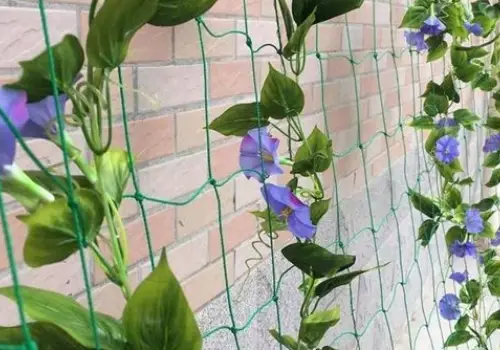
Support Nets for Flower Planting
Installing plant support nets is relatively simple. You can adjust the height and density of the net according to specific planting needs and crop types. Typically, the support net is fixed to ground stakes or frames, and plants gradually attach to the grid as they grow. This method can effectively improve the yield and quality of your flowers, ensuring they grow healthy and strong. If you want your flowers to grow better and more upright, plant support nets will be an indispensable part of your gardening toolkit.
5. Flower Bud Nets
If you want to improve the quality of your flowers and reduce losses, using bud nets is a wise choice. Bud nets are made from lightweight and flexible materials like polypropylene or nylon. For example, when growing roses, you can use bud nets to protect the buds as they begin to open.
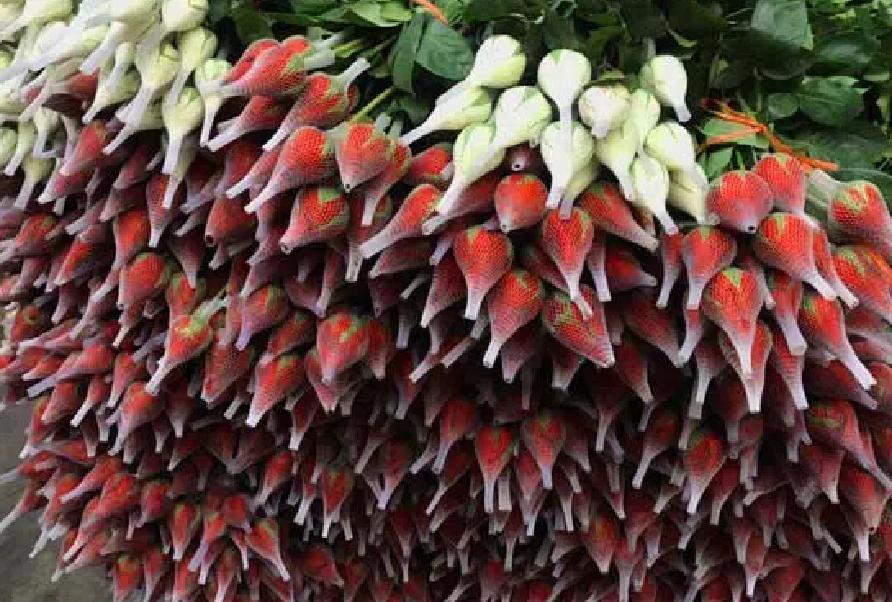
flower bud net
For flowers like roses and lotus, you can gently cover them with bud nets after harvesting. This prevents damage from wind, rain, and insects and protects the flowers during transportation, reducing losses.
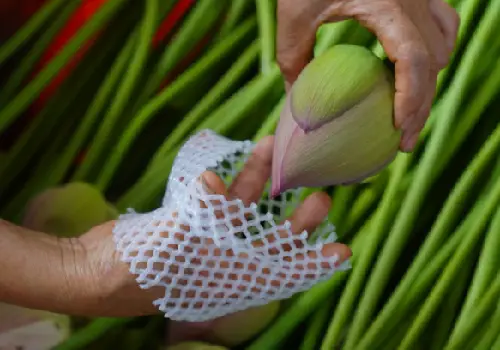
Protect lotus with bud net
Bud nets can extend the blooming period of flowers and maintain their appearance during sales. If you are a gardening enthusiast, bud nets can also reduce the need for chemical pesticides, helping to maintain the ecological balance and beauty of your garden. Using bud nets ensures your flowers receive optimal protection during growth and transportation, making your garden flourish.
6. Windbreak Nets
Using windbreak nets is essential to grow flowers in areas prone to strong winds. Windbreak nets slow down wind speeds, reducing the direct impact of wind on flowers and protecting the stems and leaves from damage. Additionally, they help maintain the microclimate around the flowers, reducing temperature fluctuations and evaporation rates, which helps keep soil moisture and temperature stable, promoting the healthy growth and blooming of flowers.
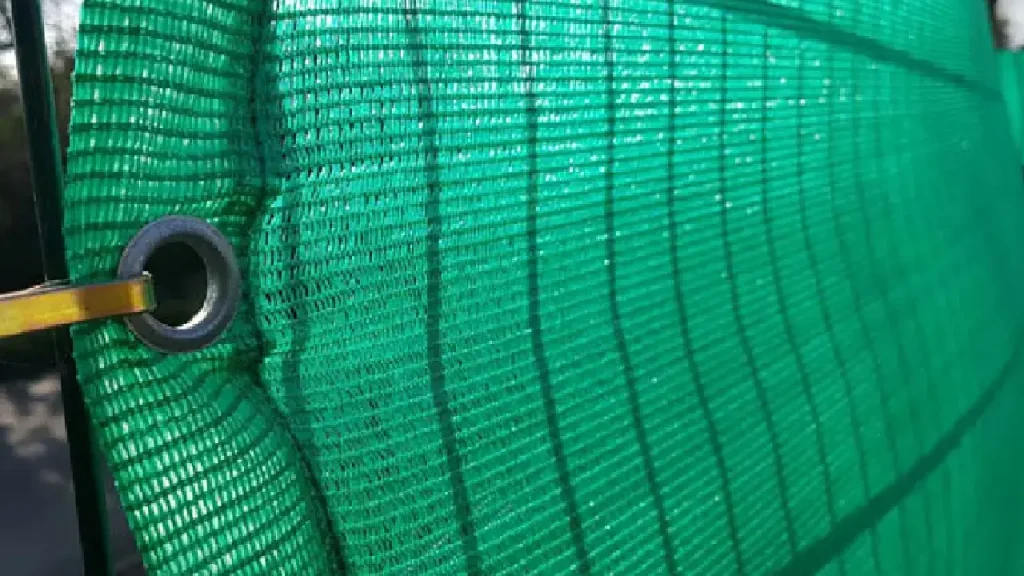
Windbreak netting for plants
When selecting windbreak nets, consider a few key points. First, choose the appropriate mesh size to effectively reduce wind speed without overly restricting air circulation. Second, ensure the windbreak net is made from durable materials like high-density polyethylene (HDPE) to guarantee stability and longevity in various weather conditions. Third, ensure the windbreak net is securely fastened with a sturdy support structure and fixings so it won’t be blown away or damaged in strong winds. Finally, select the right size and coverage area for your growing region to protect your flower planting area fully.
Conclusion
In addition to using the agricultural protection nets mentioned above to keep your flowers healthy, you can also take advantage of advanced gardening techniques or agricultural structures like greenhouses to provide better crop protection and growing environments. By combining different planting methods and protection nets, you can enhance the yield and quality of your flowers.
Finally, if you are interested in bulk purchasing agricultural protection nets from China, the manufacturing powerhouse, please contact us to get factory wholesale prices quickly.
